A few weeks ago, Nic managed to catch up to prolific BattleTech writer Philip A. Lee at GenCon 2019, who graciously agreed to an interview. I’ve read a few of Philip’s stories, so it was my absolute pleasure to pick his brain on how he got into BattleTech, how he started writing BattleTech, and how he managed to kill a Jenner in the most hilarious way possible. Well, he didn’t really kill the Jenner, but it was still hilarious and you should read about it.
On top of that, we also get a grade A. Lee-preview of the next story we can expect from the prolific author. So once again, sit back, relax, and enjoy another story from the many corners of BattleTech.
Sarna (Sean): Who are you? Briefly introduce yourself.
Philip A. Lee: I am Philip A. Lee, writer & editor extraordinaire. I’ve written, edited, and developed countless products for Catalyst Game Labs (and a few other game companies) since I first started working in the tabletop-gaming industry in 2011. My most notable contributions to the fiction lines have been for BattleTech and Shadowrun, and my prominent game-related work has been with BattleTech, Shadowrun, Cosmic Patrol, and The Valiant Universe RPG. I was also the assistant editor of BattleCorps.com from 2012 until it went offline in 2016.
Sarna: When and how did you get into BattleTech?
Philip: I forget the exact year, but believe the first time I ever played was in the early ’90s. My first handful of games were played with my friend’s Second Edition copy. I really liked the game—and the fact it was based on anime-looking mecha didn’t hurt—but truth be told, I didn’t quite latch onto the lore of the game at first. I never had any of the original House books to peruse, and my friend and I basically just played Davion vs. Kurita slugfests all the time—no real objectives, no buildings or anything. So after a while, I was starting to get bored with the game…until I saw my friend’s copy of Way of the Clans, which he made the mistake of letting me borrow. I say “mistake” because he created a monster: I utterly devoured that book. And then he let me borrow Bloodname, and then Falcon Guard. And man, was I hooked. I went out and bought a copy of Third Edition, taught my best friend to play, bought every single BattleTech novel and sourcebook I could find at local bookstores, and the rest is history. (What saddens me, now that I think of it, is I still have every one of my original books except my hardback copy of the BattleTech Compendium: The Rules of Warfare—the one with the blue Mad Cat on the cover. No clue what happened to that. That was hands-down my all-time favorite rulebook…)
Sarna: What parts of BattleTech do you play? Perhaps a better question, what HAVEN’T you played?
Philip: I mostly play with ’Mechs with Total Warfare rules, but I also greatly enjoy running games with vehicles, infantry, and the occasional aerospace support. Really just depends on the scenario.
I haven’t played a lot of Alpha Strike games, mostly just because I love the grit of the Total Warfare–scale damage. For example, my all-time favorite ’Mech-death story never would’ve happened if we were playing with Alpha Strike rules (but that’s a whole different topic). Despite owning a copy of BattleSpace, I’ve also not played a ton of straight-up aerospace games, mostly because stories on the ground are more compelling to me as a player. I’ve played a few handfuls of BattleForce–scale games, but I’ve yet to play a game with the rules for Planetary Conquest or Inner Sphere in Flames.
Sarna: How’d you get into BattleTech fiction writing?
Philip: The short answer: I wrote a BattleTech short story in 2010, submitted it, and it was accepted and published in 2011. Then I wrote a second story; lather, rinse, repeat. Easy-peasy, right?
The long answer: Back around 1996–97, I thought about sending FASA a pitch for a BattleTech novel. I’d already sent them a pitch for a Shadowrun novel, and while waiting to hear back from them on that, I came up with this brilliant—“high school senior” brilliant, that is…—idea for a story where this Clan Wolf MechWarrior took this Inner Sphere woman prisoner, and he started falling for her, to the point that he started questioning his own honor. In retrospect, it was an objectively terrible idea for a BattleTech novel—I’m so embarrassed by my working title that I won’t even share it here—but that idea planted a seed that would eventually bloom after some fifteen years’ worth of honing my writing chops.
When FASA closed their doors, I sadly fell out of touch with BattleTech for a while—a brief dalliance with MechWarrior: Dark Age notwithstanding. I completely missed all of the FanPro offerings, but I do remember seeing Catalyst’s 2007 BattleTech box set at Origins that year. Unfortunately, I didn’t pick one of those up, either because (a) they were sold out by then, (b) I didn’t have enough money on me, (c) I thought, “Who could I even get to play this with me?” or (d) some combination of the above. However, about 2009 or so, one my wife’s coworkers casually mentioned BattleTech to her for some reason—they were comparing their nerd cred, I think—and that led to him and I starting to play BattleTech, and it was honestly like coming up for a breath of fresh air.
In my course of rediscovering BattleTech and trying to pick up all of the FanPro and Catalyst books I’d missed in the intervening years, I discovered BattleCorps.com, and I thought to myself, “I’ve written, what, ten novels and dozens of short stories so far? I could probably write a BattleTech short story in my sleep…” And so I gave it a whirl. I mean, what’s the worst that could happen? Another rejection slip to add to my growing stack of novel-query rejection letters? So I sat down to write what became “A Wolf in the Eyrie,” which was accepted after I did some minor requested revisions. And then I just kept on writing BattleCorps stories. And writing BattleCorps stories led to writing BattleTech sourcebooks and novellas, and it’s all history from there.
Sarna: What’s your favorite BattleTech story that you’ve written?
Philip: I have so many of them, and I love them for different and personal reasons. For example, I love “Seeds of Loyalty” because it was based on an obscure-yet-fascinating note in a sidebar in The Clans: Warriors of Kerensky, and not only did I get to base a story around the fascination, I got to canonize the explanation for the mystery of that detail. I love “Fragments of History” because I was able to frame it in a unique way, and the story itself inspired me to make a diorama for the story (which won me second place in one of BattleCorps’s diorama contests). I love “So Costly a Sacrifice,” because it was loosely inspired by my late grandfather, who served in a tank destroyer battalion during WW2. I love “A Keystone Arch” because, before I even had the idea for that story, someone on the BattleTech forums complained about how “the Fire Mandrills are so boring that no one could write a compelling story about them,” so I specifically wrote that story to basically prove them wrong, that you can make any faction in BattleTech compelling (that story also inspired me to develop and write Operational Turning Points: REVIVAL Trials). Pretty much every BattleCorps story I’ve written has a backstory to it, but I think the story I’m the most proud of is “A Living Epitaph.” That one still makes me a little misty-eyed whenever I think about it.
Sarna: And your favorite BattleTech story that you HAVEN’T written?
Philip: Several years ago, back when John Helfers, who is now Catalyst’s Executive Editor, talked about restarting the BattleTech novel line, he asked me to pitch a story for a novel set during the Jihad. So I started working on a novel pitch that was technically set during the Jihad, but was set in the Clan Homeworlds during the Wars of Reaving. One of the BattleCorps stories I wrote before that had been set during the Wars of Reaving—the aforementioned “A Living Epitaph”—and due to how well that story was received, I knew that a novel set in that period could work. I was halfway through plotting the skeleton of the story when I found out that John wasn’t interested in novels set in the Clan Homeworlds, so I had to abandon the idea and work on a different pitch instead. I still like the story angle I was going for in that Wars of Reaving novel, and I’d love to write that novel someday, but alas, that day is not today.
Sarna: What’s your favorite era to write in?
Philip: I don’t have a favorite era, per se, but I do absolutely have a favorite location: the Clan Homeworlds. This mostly involves the Succession Wars era, but Homeworlds Clans stories can span all the way up through the end of the Jihad and a bit beyond. (The Wars of Reaving Supplemental goes up to 3090.) Unless I miscounted—I’m a writer, not a mathematician—seven of the BattleCorps stories I wrote were set in the Homeworlds.
Sarna: How does one start writing BattleTech fiction today? Is BattleCorps still going?
Philip: BattleCorps.com was once a great way to get one’s foot in the door for writing in the BattleTech universe. Unfortunately, the website ceased operation at the end of 2016 (for very mundane reasons I won’t bore you with), which left the occasional anthology—Legacy, for example—as the only means of publishing new BattleTech short fiction.
However, things are now looking up! Ever since BattleCorps’s closure, I’ve championed the idea of starting a BattleTech short-fiction magazine: rather than a website subscription, this would be a true ebook fiction magazine (but with a print-on-demand option, for folks who prefer hardcopy). It has taken some time to get off the ground, but the first issue of the not-yet-titled magazine is slated for Q1 of 2020, thanks to the huge groundswell of support Catalyst got through their Clan Invasion Box Set campaign on Kickstarter. Once we get our submissions apparatus up and running—hopefully soon after this interview is published!—we’ll be taking submissions for short stories, scenarios, and so on.
Sarna: How does the whole writing fiction thing take shape? I mean, do you get your major plot points straight from Catalyst and go from there, or do you have a lot of leeway to shape the course of events in your books/short stories?
Philip: When it comes to short fiction, it’s easy to write “between the lines” of the published material than it is to come up with whole-cloth content that may contradict published, canon material. For example, my story “Rain Dance” came about because a lot of things broke down when the Free Worlds League dissolved at the end of the Jihad, and I imagined that the independent worlds more on the fringes of the former League would be hit hardest because federal regulations and such had fallen apart. So that story came about as a way of telling how bad some things could get, and it showcased a small mercenary unit who was going to all of these newly orphaned worlds and doing what they could to help the populace before moving on to the next world that might need their help.
For longer fiction, it’s a little different. For example, my novella A Splinter of Hope was plotted based on the notes I was given for the book that became Shattered Fortress, so I had to ensure that the story I wrote in Splinter matched the events in Shattered Fortress.
Sarna: What’s your writing process like? Do you just sit down and bang out a chapter in an afternoon, or is it little bits at a time?
Philip: Whenever I sit down to write fiction, I tend to read a few pages of whatever novel I’m reading (right now it’s Frank Herbert’s Children of Dune, for those who are curious), which helps to “make words feel comfortable,” as one author put it. Then I reread the current scene I’m working on, maybe review some of my notes, and then I set a one-hour timer. The timer is super important: it ensures I do nothing else until that timer goes off, and that’s my fiction-writing time for the day. (I usually don’t get more than an hour of fiction-writing time unless it’s the weekend or I’m on vacation.) So I go in small chunks at a time, roughly 500–600 words an hour. I’m not the fastest writer in the world, but since I’m also a professional editor, my first drafts are already focused and clean, which saves myself—and whoever ends up editing my work—a lot of time in the long run.
Sarna: Can you tell us about any upcoming fiction you’ve got in the works?
Whenever I sit down to write fiction, I tend to read a few pages of whatever novel I’m reading, which helps to “make words feel comfortable,” as one author put it.
Philip: I’m currently working on a novel set in the Free Worlds League during the events of Shattered Fortress, with a working title of Hunting Season. I also have a long-neglected work-in-progress novella that follows a Capellan Elastic Defense unit during the Third Succession War.
Sarna: Back to that “all-time favorite ’Mech-death you” mentioned earlier—what’s the story there?
Philip: Well, in a game more than a decade ago, our merc unit was going through a city looking for our contact: a planetary official with vital intel and we’re trying to help them defect. One of the guys in my unit had a Jenner in his lance, and once we located our contact, he ran it down a paved road to pick them up before the enemy could. When he tried to turn down a different street while at a full-out run, he failed his Piloting Skill Roll and the completely untouched Jenner skidded into a fall, taking damage. But the momentum of his failed run carried his skidding ’Mech through the building in the adjacent hex—which damaged him as he entered—then through the other side—which damaged him as he exited to the next hex. But immediately in that hex on the other side of the building was a small pool of Level 2 water, which he fell into—again taking damage as his momentum. He landed on his head, which knocked the pilot unconscious. After he woke up and tried to stand the Jenner up in the water, he failed that Piloting Skill Roll as well, and when he rolled the damage location for the fall, it came up a 12. So the damage stripped the remaining armor on the head, which caused a breach, flooded the cockpit, and drowned the pilot. I mean, even though that loss ultimately cost us the objective, that was such an impressive way to go out that none of the people on my team—including the Jenner’s pilot—were even mad about it, and it gave us a story that I still tell people more than a decade later.
Sarna: What’s your favorite ’Mech? An all-important question. :)
Philip: Stormcrow Prime, hands down. Not only is it fast for its weight class, but it carries a lot of weapons and has the wherewithal to use them. And I really just love the look of it. My all-time favorite ’Mech aesthetic is “fighter jet cockpit welded onto a robot,” so Stalkers, Timber Wolfs, Novas, Jinggaus—those are my jam, and the Stormcrow is the best-looking one of the lot.
Sarna: Anything else you’d like to share? Feel free to get shamelessly self-promoty :)
Philip: I don’t have much non-BattleTech, non-Shadowrun fiction published at the moment, but I do have a horror anthology called Madness & Monsters and a short story called “Nose Art,” which is set in the National Museum of the USAF.
Thanks again to Philip for agreeing to do this interview! Hopefully we get to read that next story sooner rather than later.
And as always, MechWarriors: Stay Syrupy.
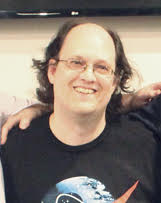
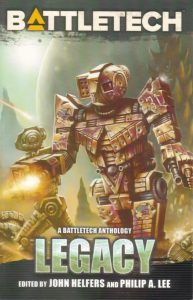
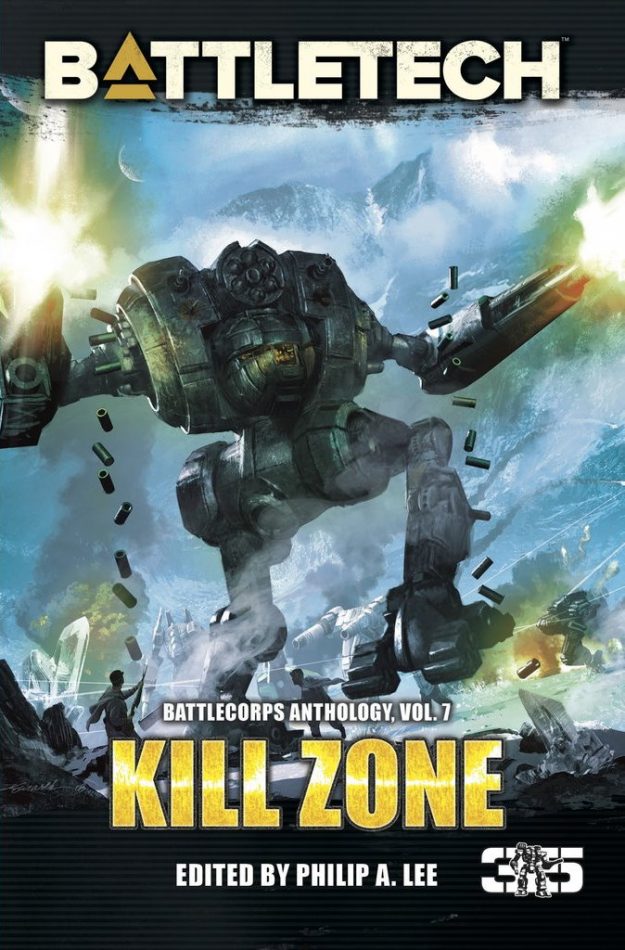
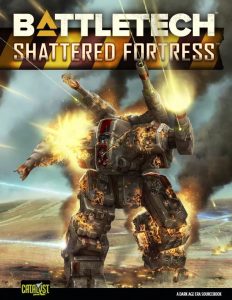

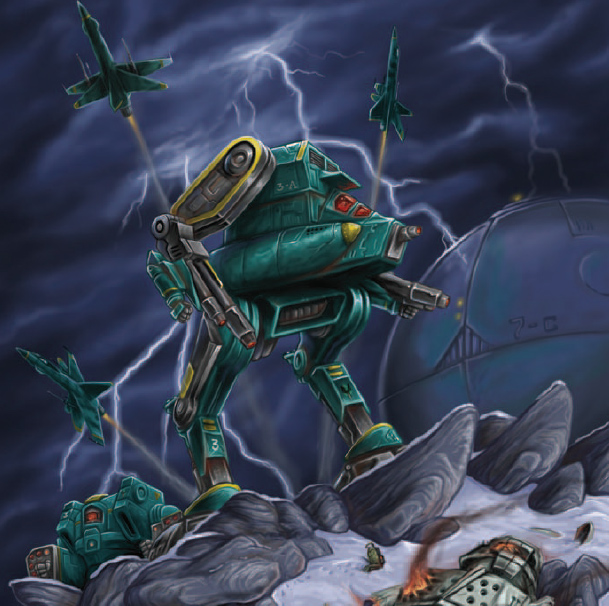

Took this opportunity to update (well nearly write from scratch) the real person article on Phil here on the Sarna.net wiki. I stole the photo from the interview as a stopgap solution.
Funny that I stumbled upon this interview while planning a nice little piece of BT fiction myself. I have been inspired by HBS’s video game to research the Periphery ca. 3025 and while talking with my wife, that classic BT plot about a down-on-their luck merc outfit and that one make-or-break job came up. Using that along with the… let’s say, interesting supply situation on your average backwater dustball can make for a decent story. I wonder if there’s interest for something like that, despite all the focus on the Clans.
I’ve come into BT by way of the Grey Death trilogy and the 3025 era will always be my home stretch.